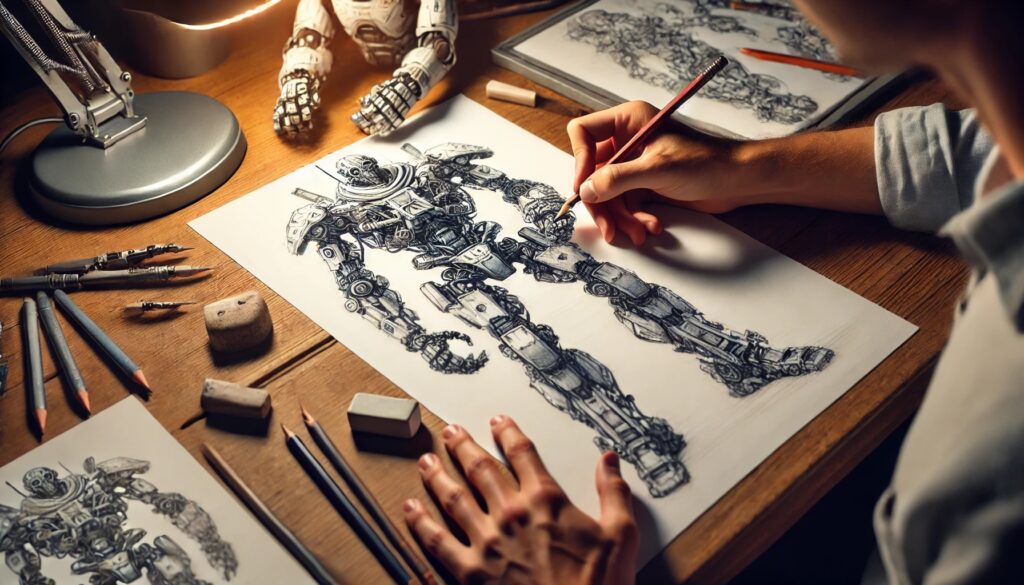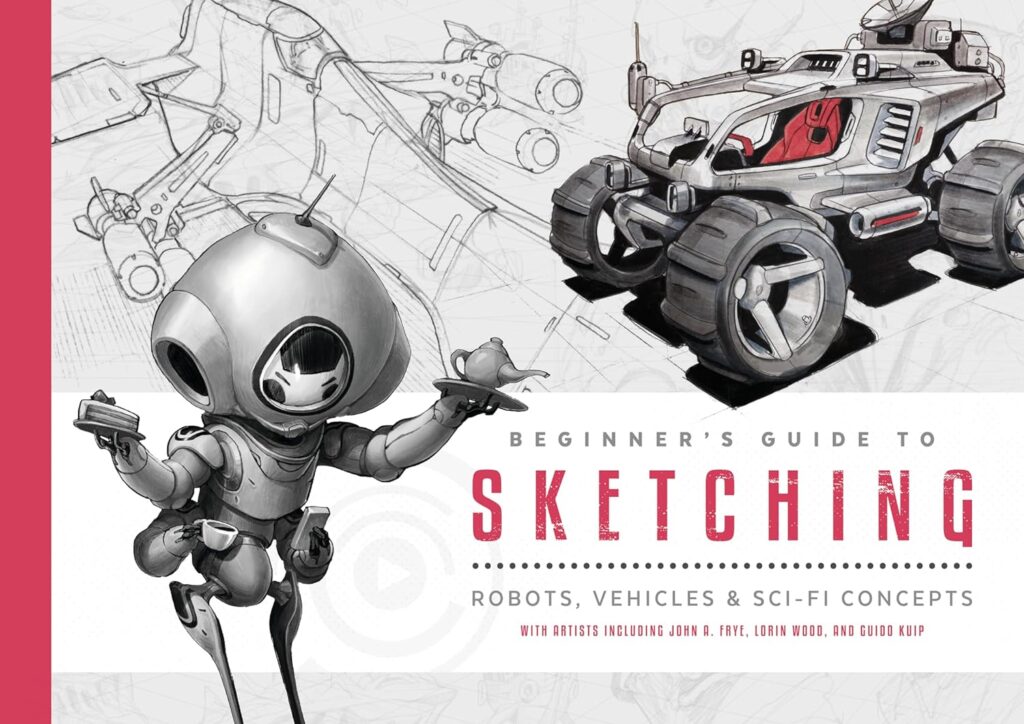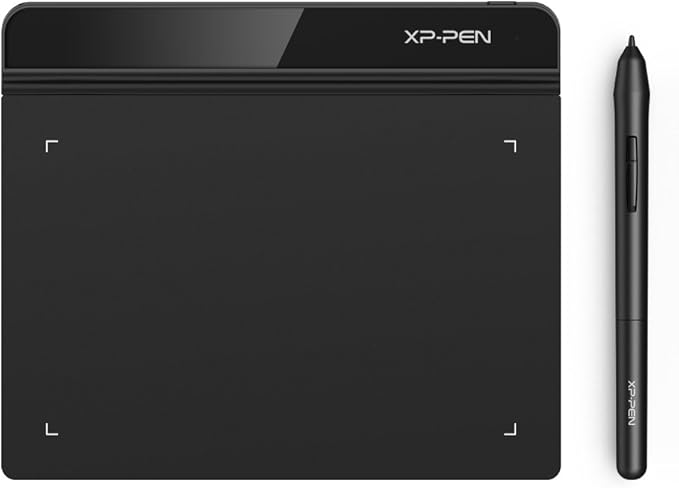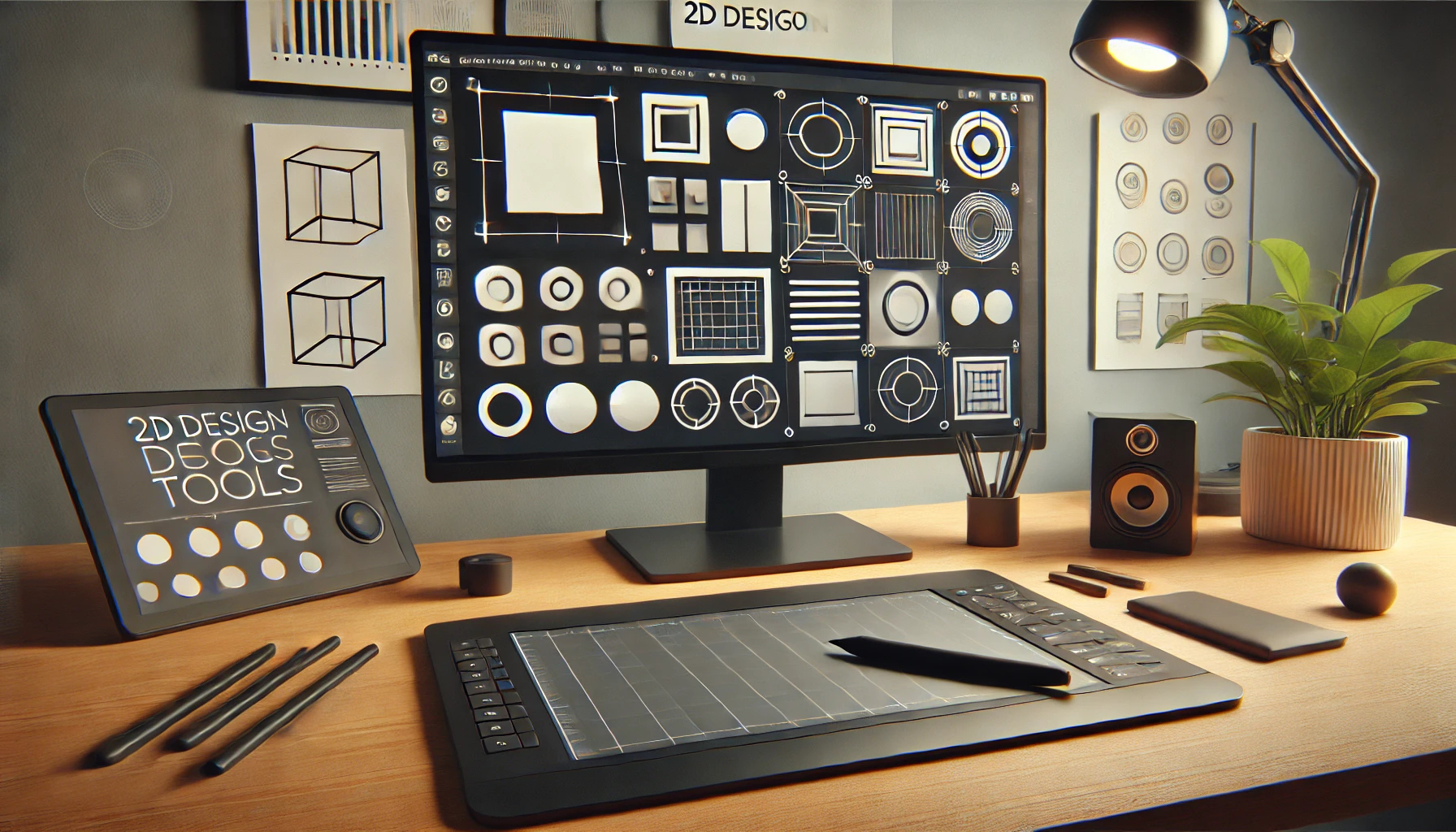
I’ve recently started a private project involving robot character design—drawing my own unique robot. It’s still a work in progress, so I’m not quite ready to share it yet, but I may in the future. Throughout this journey, I’ve found Beginner’s Guide to Sketching: Robots, Sci-fi, and Vehicles and the YouTube video How to Draw a Robot to be incredibly helpful resources. These sources provided the foundation and inspiration for my work, and I’d like to share some of the key takeaways from them.
1. Start with the Basics: Geometry is Key
Every great robot character design begins as something simple—just basic geometric shapes. Start by breaking down your design into cylinders, spheres, cubes, and other basic forms. This is where it’s all about playing around, keeping things flexible. Whether it’s a giant robot or a tiny mech buddy, this stage is where you’re giving the character its skeletal shape.
The goal here is to figure out the silhouette, making sure it has an interesting flow. Remember, simplicity often leads to the best designs—so don’t be afraid to stick with strong, simple shapes to start.
2. Perspective: Bring Depth to Your Drawing
Perspective can make or break your robot designs. Imagine how flat and dull a robot could look without any depth—yikes! Start by practicing two-point and three-point perspective. If you’re wondering why this matters, well, it’s the secret sauce that makes your robot feel real, even if it’s entirely from your imagination. Sketching a believable sci-fi scene often means locking down perspective, giving weight and scale to your concept.
Try to establish a solid perspective grid whenever you’re working on a new robot character design sketch. This will make things like arm joints, wheels, and any mechanical detail easier to place, adding to the overall coherence of your robot character.
3. Adding Personality: What Kind of Character Are They?
Once you’ve got the basic forms, think about the character’s personality. Is it a humanoid robot assistant? Or maybe a combat mech? This decision impacts the whole feel of your robot character design. Adding a bit of character can be as simple as shaping its head differently or deciding on a particular walk cycle for animation. For friendly robots, think about softer edges and maybe some asymmetry to add personality. For giant robot types, it’s all about sharp lines, symmetry, and chunky components to convey power.
If you’re aiming for a cartoon feel, try exaggerating features—big heads, round eyes, exaggerated limbs—the kind of stuff that pops out, especially for animation.
4. Master Materials: Shading and Reflections
Time to make it pop! Sci-fi robots often have materials that are reflective, metallic, or layered. To really sell these textures, focus on getting the shading right—metal should feel shiny and slick, plastics should have a smooth gradient, and exposed wiring should have intricate details.
Reflective surfaces need highlights. Imagine the robot standing next to something bright—use those highlights to help tell the story. For beginners, just remember: keep it simple but intentional. If the light is coming from above, then the reflective metal surfaces should show that light direction consistently.
5. Develop with Concept Art Techniques
When you’re happy with your initial sketch, it’s time to take it further with some concept art polish. Industry professionals typically go through iterations—they start with thumbnails and gradually add detail. This means you’re not jumping from a rough sketch straight to a fully rendered artwork. Instead, build layer by layer, adding more complexity to your design.
Render with lighting and shadows in mind to give depth to your robot character. Pay special attention to areas like joints and hinges—these parts can help add to the overall believability of movement.
6. Inspirations: Take a Cue from the Classics
Ever heard of Gundam or Voltron? These giants have defined the robot character space for years. Don’t shy away from analyzing iconic designs—understanding why certain features work can help you develop your unique spin on things. Are the arms unusually bulky? Do the legs have rocket thrusters? Think about how these elements impact the character’s abilities and role in their world.
You can also explore some traditional robot themes—are they a defender, a menace, or maybe a reluctant hero? Creating a backstory might help you figure out what kind of robot designs will work best.
FAQs on Robot Character Design
Q: How can I make my robot character stand out?
Focus on creating a memorable silhouette. When someone sees the shape, they should instantly know what kind of robot character it is. Strong outlines and unique features (like a particular head shape or arm style) can set your design apart.
Q: Do I need to be good at perspective to design robots?
While you don’t need to be a master right away, a good grasp of perspective is essential for believable robot character designs. Practice is key—use reference images and spend time on perspective grids.
Q: Should I add weapons or accessories to my robot design?
Absolutely! Accessories can add a lot of flair and context. Even if the robot isn’t designed for battle, things like tool belts, visible sensors, or even funny stickers can add loads of personality.
Q: What’s the best way to practice robot character design?
Start by sketching existing robot designs to understand proportions and common components. Then move on to creating your own simple characters based on basic geometric forms. Over time, add complexity with details like joints, armor, and various textures.
Bringing It All Together
Robot character design is a mix of understanding the fundamentals—like perspective and geometry—and giving your creation that extra bit of heart and soul. Keep sketching, keep practicing, and remember that each drawing teaches you something new. Whether it’s a giant robot protector or a cute mechanical pet, every design starts with the basics and builds up to something unique.
P.s if you are interested in getting the book see the link below, also here’s a link to the youtube video



